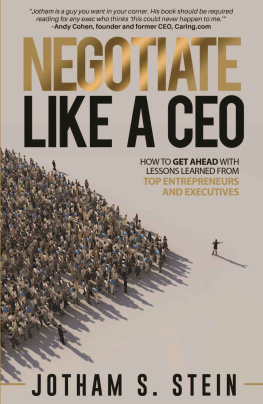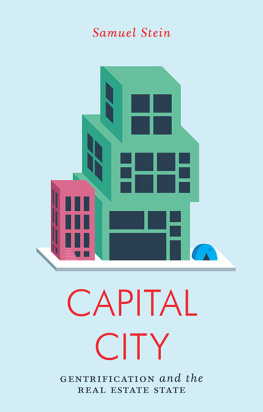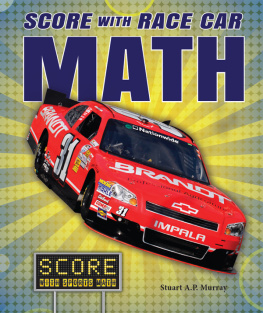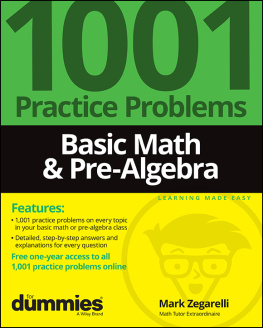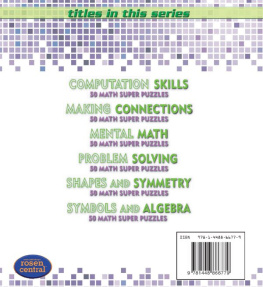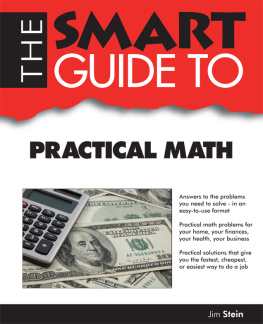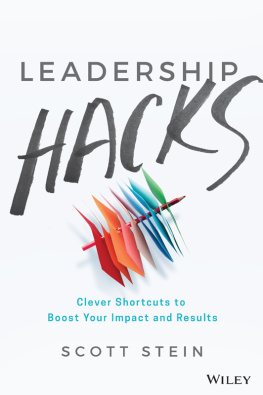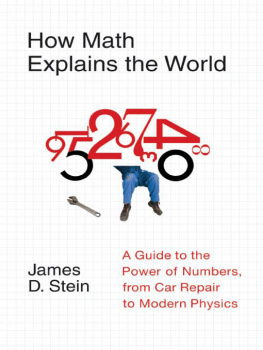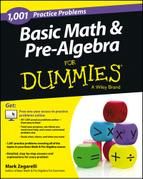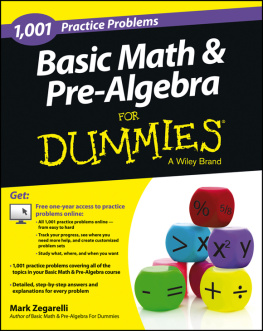Mental Math Magic: 6212 practice problems, tips, and hacks to help you calculate faster
Dorothy Stein
Introduction
If you suffer from math phobia, this book is the cure.
Many people find everyday arithmetic calculations difficult, but the skill is undoubtedly a useful one to possess.
Yes, in the age of the smartphone, a calculator app is just a few clicks away, but quick mental math saves time, energy, and makes you look smart!
Estimations of approximate values are also a great help, especially in a discussion or a negotiation.
The message is clear: being able to make simple arithmetic calculations in your head is useful. Within the pages of this book, you will find an exhaustive set of tips, tricks, and sample problems so that you have all the tools of the trade.
You will then be given many sets of problems, and will need to give yourself a time limit to complete each set. The time you take doesnt really matter, as long as you keep achieving your target time, and improve the time with every few sets.
You can either use a calculator to compute answers in real time, or use the solutions given at the end of this book.
Artificial intelligence is great; lets build up human intelligence, too!
Table of Contents
Before you start: The Mental Math toolkit
In this section, you will be given a set of simple tools that will help you perform many basic arithmetic calculations at lightning speed. The first few are trivially easy, and you probably already know them. Read on, though - there will be some new techniques that you pick up.
1. Multiplying by 10, 100, 1000, etc. : Starting you off nice and simple. If you want to multiply a number by 10, just add a 0 to its (right) end. So, 3726 x 10 = 37260. And 34255245 x 10 = 342552450.
If you want to multiply by 100, you add two zeros to the end. 65 x 100 = 6500.
If you want to multiply by one million, you add six zeros to the end. 200 x 1 million = 200 000 000.
Easy!
2. Adding 9, 99, 999, etc. to a number : We know that 9 = 10 - 1. Adding 10 is easy, and taking away 1 is easy, so we just do those two steps instead of adding 9. So, 3 + 9 is done in two stages. First, we add 10 to 3, to get 13. Next, we take away 1 from 13, to get 12. And thats our answer, 3 + 9 = 12. This works for more complex sums as well. 653427 + 9 = (653427 + 10) - 1 = 653437 - 1 = 653436.
As you might have guessed, adding 99 is similar. We first add 100, and then take away 1. So, 352 + 99 sees us adding 100 to 352 first, to get 452. We then take 1 away from 452, to get 451 (our answer).
In fact, this is the gift that keeps on giving. If someone came to you and asked you to add 998 to 4532, you could first add 1000 to 4532 to get 5532. Then, you could take 2 away from 5532 (because 998 = 1000 - 2) to get 5530.
This technique is incredibly versatile, and converts difficult addition sums to simple combinations of addition and subtraction.
3. Multiplying by 5 : This is already quite easy to do by hand, but theres a way that makes it even faster! We know that 5 = 10 / 2, so multiplying by 5 is the same as multiplying by 10, and then dividing by 2.
The first section above tells you how to multiply by 10. Dividing by 2 is perhaps the easiest thing you can do with long division, and takes less time than it would have taken you to read this sentence.
Lets say you need to multiply 486 by 5. First, you multiply 486 by 10 to get 4860. You then divide 4860 to get 2430.
Bonus: to quickly divide a number by 2 when all its digits are even, you just need to write down the quotients on division by 2 of each digit, from left to right. If you have to divide 24680246802 by 2, you use the facts that (2 / 2 = 1, 4 / 2 = 2, 6 / 2 = 3, 8 / 2 = 4, and 0 / 2 = 0) to write 24680246802 / 2 = 12340123401.
4. Dividing by 10 : To divide a number that ends in a string of zeros on the right by 10, you just take away one of the zeros from the rightmost end. So, 234000 / 10 = 23400.
If the number doesnt end in zero, you can still divide by 10, but youll end up with a decimal. So, 6523 / 10 = 652.3.
Dividing by 100 or 1000 is similar, but you will take away two zeros (if youre dividing by 100) or shift the decimal point two steps to the left (if the number doesnt end with a string of zeros, and you need to divide by 100). For example, 98700 / 100 = 987. 987 / 100 = 9.87. And 9870 / 100 = 98.7. In the last case, you take away one zero, and then shift the decimal point one place to the left.
5. Dividing by 5 : If you read section 3 above, this should be a cakewalk. Dividing by 5 is the same as dividing by 10, and then multiplying by 2 (because 5 = 10 / 2). So, if you need to divide 12340 by 5, you first divide it by 10 to get 1234. You then multiply 1234 by 2 to get 2468, and thats your answer!
You can use similar techniques to divide a number by 50, 500, etc. So, 2500 / 50 = (2500 / 100) x 2 = 25 x 2 = 50.
6. Subtracting one big number from another, especially when there is a lot of borrowing : A sum like 12345 - 6789 is not fun at all, and takes a long time to do by hand - and then you might get it all wrong.
There are two things that might help you. First, if your sum involves a number that is close to a nice number, you can use that to convert your hard subtraction problem into a combination of an easy subtraction problem and an easy addition problem. So, if you need to find 1234 - 991, you observe that, since 991 = 1000 - 9, you have 1234 - 991 = (1234 - 1000) + 9 = 234 + 9 = 243.
But this is not always possible - though, when it is possible, it makes life very very easy. When you cant simplify matters like this, you just have to resign yourself to the fact that this will take time, and either approximate the answer if youre in a situation where thats acceptable (for example, if you need to know approximately what 12345 - 6789 is, you can note that this is close to 12000 - 7000 = 5000. And its even closer to 12300 - 6800 = 5500), or check the answer (through addition) in case accuracy is very important.
Or, if possible, use your calculator!
7. Percentages : These occur everywhere in daily life, and its often all about training our brains to quickly identify what multiplication or division problem a particular percentage talks about.
For example, if you need to find 10% of a certain number, you just need to divide that number by 10 (and section 4 taught us just how to do that!). If you need to find 5% of a number, you need to divide it by 20 (first divide by 10, and then divide by 2). If you are asked to find 80% of a number, you need to divide it by 5 (easy!) and then multiply it by 2, and then multiply it again by 2.
Percentages are easy if you think of them as an alien language that you know, and convert everything they say into division and multiplication problems.
8. Multiplying a number by 11 : Just multiply it by 10, and add that result to the number itself. For example, if you need to find 53 x 11, you take 530, and add it to 53, to get 583.
And 23656 x 11 = 236560 + 23656 = 260216.
9. BODMAS : If you have a long, complicated string of numbers, separated by multiplication, division, addition, and subtraction signs, you will agree that the value of the expression depends on which order you do the calculations in. Thankfully, math has a rule for that.
In the complicated expression, you first solve the division and multiplication problems, and then the addition and subtraction ones. For instance:
1 - 2 + 3 x 4 / 6 - 7 + 8
= 1 - 2 + 12 / 6 - 7 + 8 (we first solve 3 x 4 = 12)
= 1 - 2 + 2 - 7 + 8 (we solve 12 / 6 = 2)
= 1 + 0 + 1 (we solve 2 - 2 = 0 and 8 - 7 = 1)



